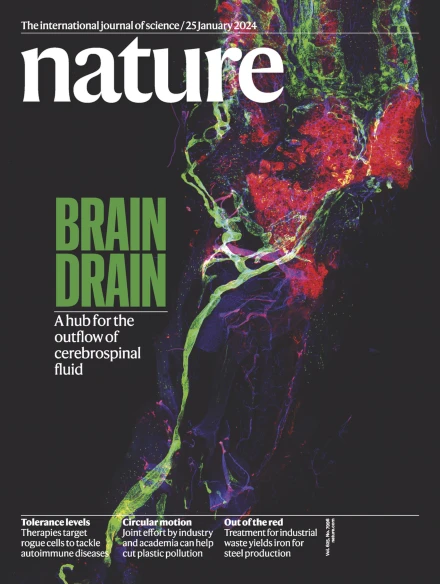Vertically stacked monolithic perovskite colour photodetectors
IF 50.5
1区 综合性期刊
Q1 MULTIDISCIPLINARY SCIENCES
引用次数: 0
Abstract
Modern colour image sensors face challenges in further improving sensitivity and image quality because of inherent limitations in light utilization efficiency1. A major factor contributing to these limitations is the use of passive optical filters, which absorb and dissipate a substantial amount of light, thereby reducing the efficiency of light capture2. On the contrary, active optical filtering in Foveon-type vertically stacked architectures still struggles to deliver optimal performance owing to their lack of colour selectivity, making them inefficient for precise colour imaging3. Here we introduce an innovative architecture for colour sensor arrays that uses multilayer monolithically stacked lead halide perovskite thin-film photodetectors. Perovskite bandgap tunability4 is utilized to selectively absorb the visible light spectrum’s red, green and blue regions, eliminating the need for colour filters. External quantum efficiencies of 50%, 47% and 53% are demonstrated for the red, green and blue channels, respectively, as well as a colour accuracy of 3.8% in ΔELab outperforming the state-of-the-art colour-filter array and Foveon-type photosensors. The image sensor design improves light utilization in colour sensors and paves the way for the next generation of highly sensitive, artefact-free images with enhanced colour fidelity. A colour sensor array based on multilayer monolithically stacked lead halide perovskite thin-film photodetectors achieves higher quantum efficiency and superior colour accuracy compared to conventional filter-based image sensors.

垂直堆叠的单片钙钛矿彩色光电探测器
由于固有的光利用效率限制,现代彩色图像传感器在进一步提高灵敏度和图像质量方面面临挑战。造成这些限制的一个主要因素是无源滤光片的使用,它会吸收和消散大量的光,从而降低了光捕获的效率。相反,foveon型垂直堆叠架构中的有源光学滤波仍然难以提供最佳性能,因为它们缺乏颜色选择性,使得它们在精确的彩色成像中效率低下3。在这里,我们介绍了一种创新的颜色传感器阵列结构,它使用多层单片堆叠卤化铅钙钛矿薄膜光电探测器。钙钛矿的带隙可调性被用来选择性地吸收可见光光谱的红、绿、蓝区域,从而消除了对滤色器的需要。红色、绿色和蓝色通道的外部量子效率分别为50%、47%和53%,在ΔELab中颜色精度为3.8%,优于最先进的颜色滤光器阵列和foveon型光传感器。图像传感器设计提高了色彩传感器的光利用率,为下一代高灵敏度、无伪像、增强色彩保真度的图像铺平了道路。
本文章由计算机程序翻译,如有差异,请以英文原文为准。
求助全文
约1分钟内获得全文
求助全文
来源期刊

Nature
综合性期刊-综合性期刊
CiteScore
90.00
自引率
1.20%
发文量
3652
审稿时长
3 months
期刊介绍:
Nature is a prestigious international journal that publishes peer-reviewed research in various scientific and technological fields. The selection of articles is based on criteria such as originality, importance, interdisciplinary relevance, timeliness, accessibility, elegance, and surprising conclusions. In addition to showcasing significant scientific advances, Nature delivers rapid, authoritative, insightful news, and interpretation of current and upcoming trends impacting science, scientists, and the broader public. The journal serves a dual purpose: firstly, to promptly share noteworthy scientific advances and foster discussions among scientists, and secondly, to ensure the swift dissemination of scientific results globally, emphasizing their significance for knowledge, culture, and daily life.
 求助内容:
求助内容: 应助结果提醒方式:
应助结果提醒方式:


